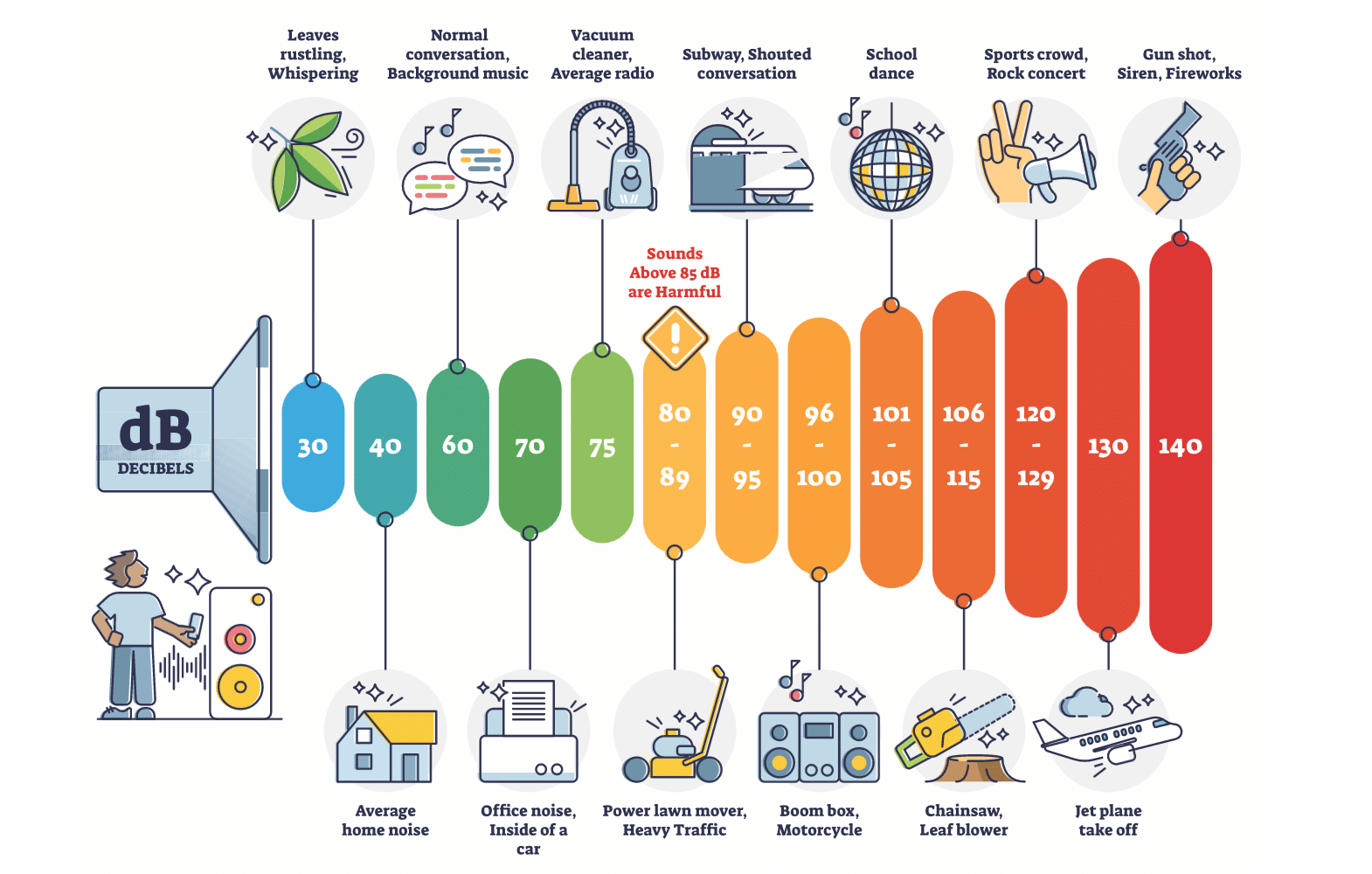Our everyday lives are full of noise, some of which has the ability to damage our hearing. And
because our hearing is a depreciating-only asset, it’s incredibly important to protect and
maintain what we’ve been given!
The volume of noise is measured in decibels (dB), and our ear anatomy begins to show signs of
damage when exposed to sounds 85 dB or higher. To put this into perspective, average home
noise such as cabinets closing, footsteps, background TV or music, etc., all live within the 40 –
60 dB range. When you head outside to mow your lawn, your lawn mower can reach decibels
within a range of 80 – 89 dB!
The fall season is nearly here, and with it those pesky piles of leaves in your yard. When it
comes time to find your trusty leaf blower (106 – 115 dB), be sure to protect your ears with
simple in-ear plugs, or noise-reduction ear muffs.
When hearing loss is experienced, it’s common for the one experiencing it to simply turn up the
volume of things, like their TV, earbuds, and cell phone. This unfortunately exacerbates the
problem and can lead to further aggravated hearing loss. If you find yourself having to crank the
dial, it may be time for a hearing exam. The silver lining is that with Beltone, hearing exams are
completely painless and absolutely free.
Refer to the handy decibel diagram above to get comfortable with your decibel levels, and to
stay ahead of hearing loss due to noise damage!

